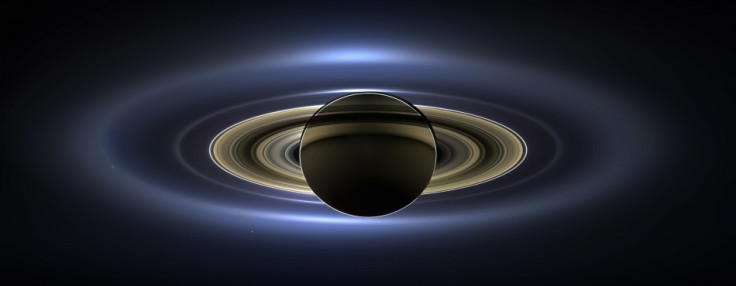Minor planet in solar system may be sixth body to host a ring system

A possible ring system has been detected around Chiron, a minor planet or centaur, making it the sixth such object in the solar system.
The inference followed observations of a MIT team during a stellar occultation by Chiron and has been validated by an independent group that combined the occultation data with other light data to conclude that Chiron most likely has a ring system.
In November 2011, the group observed a stellar occultation in which Chiron passed in front of a bright star, briefly blocking its light.
The researchers observed two distinct symmetrical features near the start and end of the occultation, each about 300 km from the centre of the centaur. The features are 3 and 7 km wide.
This suggests the centaur may possess a ring system or a circular shell of gas and dust, or symmetric jets of material ejected from its surface.
"It's interesting, because Chiron is a centaur -- part of that middle section of the solar system, between Jupiter and Pluto, where we originally weren't thinking things would be active, but it's turning out things are quite active," says Amanda Bosh, from MIT's Department of Earth, Atmospheric and Planetary Sciences.
Bosh and her colleagues at MIT have published their results in the journal Icarus.
Scientists only recently detected a ring system around Chariklo, one of a class of minor planets called centaurs: small, rocky bodies that qualify for both asteroids and comets, named after the mythical hybrid creature made of man and beast.
Four other bodies in our solar system bear rings - Saturn hosting the largest while Jupiter, Uranus, and Neptune have rings of dust and gas around them.
The planetary centaurs
Chiron, discovered in 1977, was the first planetary body categorised as a centaur.
Today, scientists estimate there are more than 44,000 centaurs in the solar system, concentrated mainly in a band between the orbits of Jupiter and Pluto.
While most centaurs are thought to be dormant, scientists have seen glimmers of activity from Chiron with patterns of brightening and behaviour of a streaking comet.
In 1993 and 1994, James Elliot, then a professor of planetary astronomy and physics at MIT observed a stellar occultation of Chiron and made the first estimates of its size. Elliot also observed features in the optical data that looked like jets of water and dust spewing from the centaur's surface.
The latest work follows more precise observations of Chiron, using two large telescopes in Hawaii: Nasa's Infrared Telescope Facility on Mauna Kea, and the Las Cumbres Observatory Global Telescope Network, at Haleakala.
In 2010, the team started to chart the orbits of Chiron and nearby stars in order to pinpoint a stellar occultation slated for 29 November, 2011, and reserved time on the two large telescopes in hopes of catching Chiron's shadow.
"There's an aspect of serendipity to these observations," Bosh says. "We need a certain amount of luck, waiting for Chiron to pass in front of a star that is bright enough. Chiron itself is small enough that the event is very short; if you blink, you might miss it."
The researchers agree that Chiron may still possess symmetrical jets of gas and dust, as Elliot first proposed.
A ring for a centaur
Rings could form around a centaur when debris from a nearby break-up is captured by it. Or it could be formed from leftovers from Chiron's birth, says Ruprecht, who is a researcher at MIT's Lincoln Laboratory.
"Another possibility involves the history of Chiron's distance from the sun," Ruprecht says.
"Centaurs may have started further out in the solar system and, through gravitational interactions with giant planets, have had their orbits perturbed closer in to the sun. The frozen material that would have been stable out past Pluto is becoming less stable closer in, and can turn into gases that spray dust and material off the surface of a body. "
Ruprecht says researchers will have to observe more stellar occultations of Chiron to truly determine which interpretation -- rings, shell, or jets -- is the correct one.
© Copyright IBTimes 2025. All rights reserved.





















